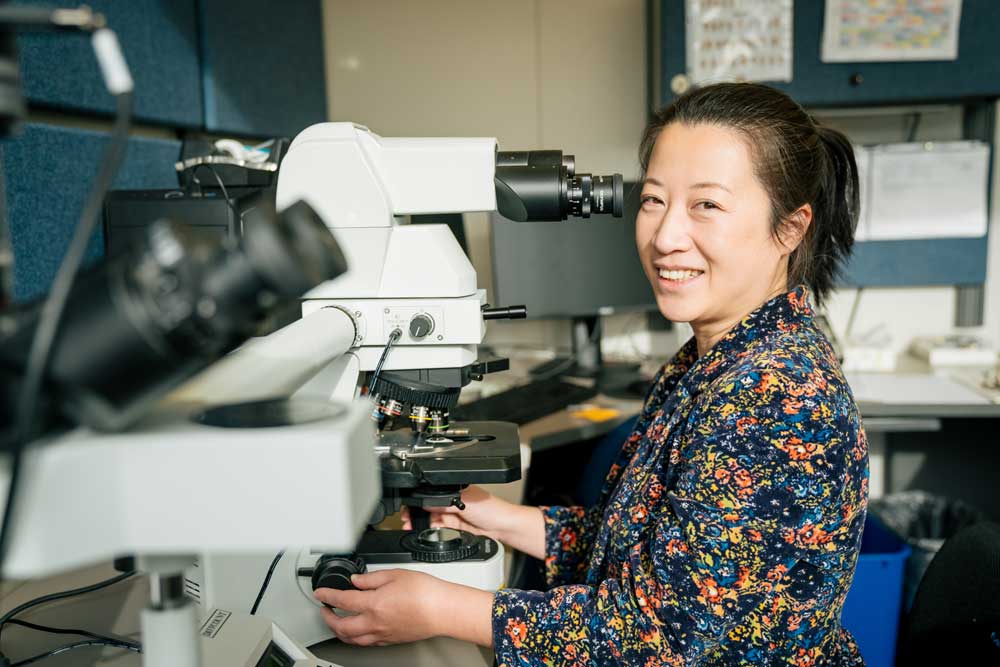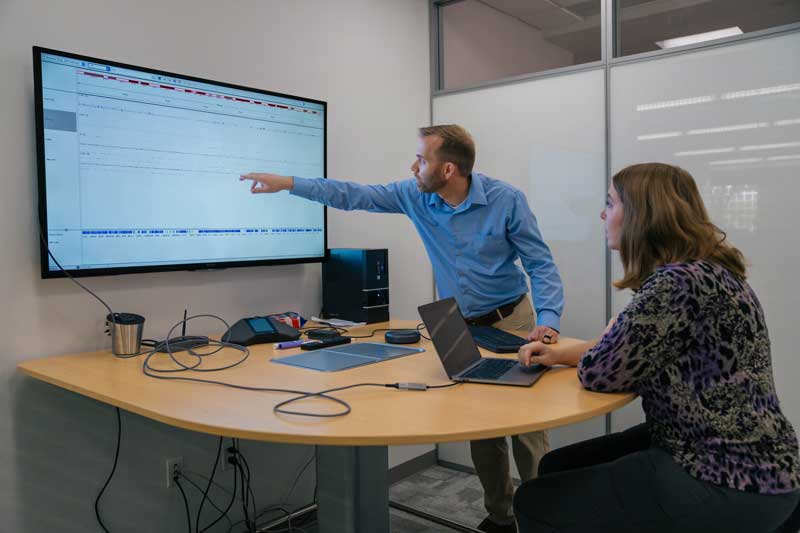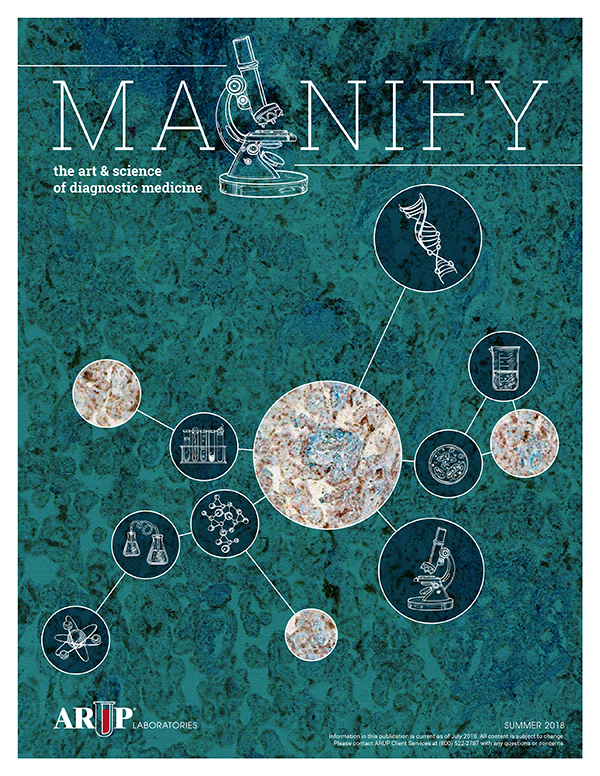
ARUP’s Myeloid Malignancy Mutation Panel Is First To Offer Both a Targeted Gene Approach and Genomewide Analysis
An ARUP-developed panel is the first of its kind to use next generation sequencing (NGS) to identify small, intermediate, and large structural abnormalities, including copy number variants (CNVs) and copy number-neutral loss of heterozygosity (CN-LOH), in a single assay.
The Myeloid Malignancies Mutation and Copy Number Variation Panel by Next Generation Sequencing (3016621) offers a more comprehensive, cost-effective analysis of the genetic abnormalities involved in tumorigenesis that can inform the prognosis and treatment of acute myeloid leukemia (AML), myelodysplastic syndromes (MDSs), and other hematologic neoplasms.
ARUP is the only reference lab in the United States to offer this innovative test.
“By combining cytogenetic and NGS testing into one assay, this test offers integrated insights that can guide or optimize patient care decisions,” said Peng Li, MD, PhD, medical director of Hematopathology at ARUP.

Li’s recent research, which includes groundbreaking investigation of DDX41-associated myeloid neoplasms, has focused on the molecular etiology of myeloid and lymphoid malignancies and has identified novel germline and somatic mutations contributing to hematologic neoplasms. She played an instrumental role in the development of ARUP’s new myeloid malignancy panel.
CNV alterations, which are aberrations in the number of copies of a sequence of DNA, have been shown to contribute to cancer initiation and progression and to therapeutic resistance.
In 2022, the World Health Organization (WHO) and the International Consensus Classification (ICC) published updated guidelines regarding the classification of myeloid neoplasms and acute leukemias. Li said the new guidelines indicate that CNV information is essential for the diagnosis, subclassification, and risk stratification of hematologic malignancies.
Conventionally, two separate testing methods, sequencing and genomic microarray, are required to capture both small point mutations and larger structural variations.
“Panels that only include targeted genes offer a limited view. If we only look at point mutations, we miss something,” said Philippe Szankasi, PhD, a scientist in Oncogenomics in the ARUP Institute for Clinical and Experimental Pathology® (Research and Development). Szankasi contributed to the validation of the panel, which ARUP began offering in October 2023. “We also need to know about the larger deletions/duplications that might remove a gene or triplicate it,” he said.
To identify CNVs, teams at ARUP designed the new panel to sequence segments of DNA throughout the entire genome in what they refer to as a backbone. According to Szankasi, 25% of the data captured from the assay is dedicated to this backbone. By sequencing across the entire genome, the data offer a broader picture of the alterations.

In addition to CNVs/CN-LOH, the assay also targets nearly 70 genes that are clinically relevant in myeloid malignancies.
“This test will identify more disease-causing variants, providing patients with more conclusive results than traditional next generation sequencing or conventional cytogenic testing provide,” Li said. “The test’s sensitivity in detecting CNVs at subgene or near-gene level … surpasses that of conventional karyotyping, FISH [fluorescence in situ hybridization], or array studies.”
By combining what would normally be two assays—which use separate methods—into a single test, this panel provides a cost-effective option for comprehensive, integrated analysis.
As part of its design, the panel also has the capacity to identify CN-LOH. Regions of CN-LOH produce identical segments of DNA without altering the normal copy number of the chromosomes, which can lead to malignancy.
For example, CN-LOH can occur in the gene known as TP53—a gene that encodes the protein p53, a known tumor suppressor that controls cell division and cell death. When both copies of TP53 are mutated, this imbalance can lead to the development of malignancy.
“TP53 loss of heterozygosity may be missed by conventional testing,” Li said.
To identify and report CN-LOH, ARUP teams had to develop their own software program with the capacity to recognize abnormal homozygous patterns and establish standard procedures for their analysis and reporting.

“It basically doubles the work per sample in terms of the analysis required. It’s a new class of variant that required the team to write all new standard procedures,” said Steven Friedman, PhD, group manager of the Clinical Analytics in Sequencing and Clinical Analytics Division.
The software, which has been dubbed “Sweet n LOH,” analyzes variant allele frequency data to detect abnormalities.
“We have to determine what is normal versus abnormal from a mathematical perspective,” said Anastasia Kellogg, senior bioinformatics scientist, who was key to the software’s development.
The software identifies precise breakpoints where the abnormal (homozygous) sections of chromosome begin and end, compared to the normal (heterozygous) sections. The identification of those breakpoints enables the detection of CN-LOH.
“I credit our biocomputing team with building the software and tools, as well as working with ARUP’s medical directors to establish a workflow that was clinically thorough, but also efficient,” Friedman said.
More information about the panel is available in this Test Fact Sheet, on ARUP’s Laboratory Test Directory, and on the aruplab.com Hematopathology page.




